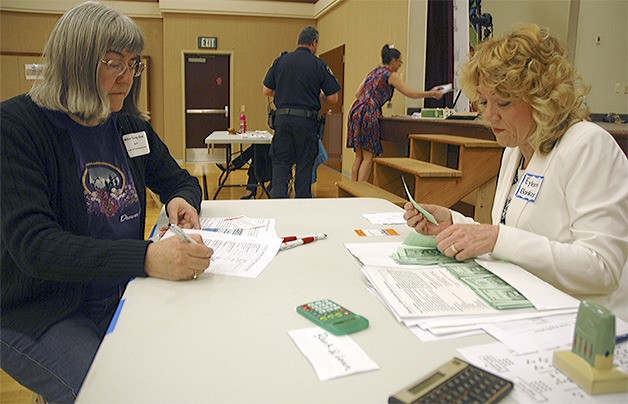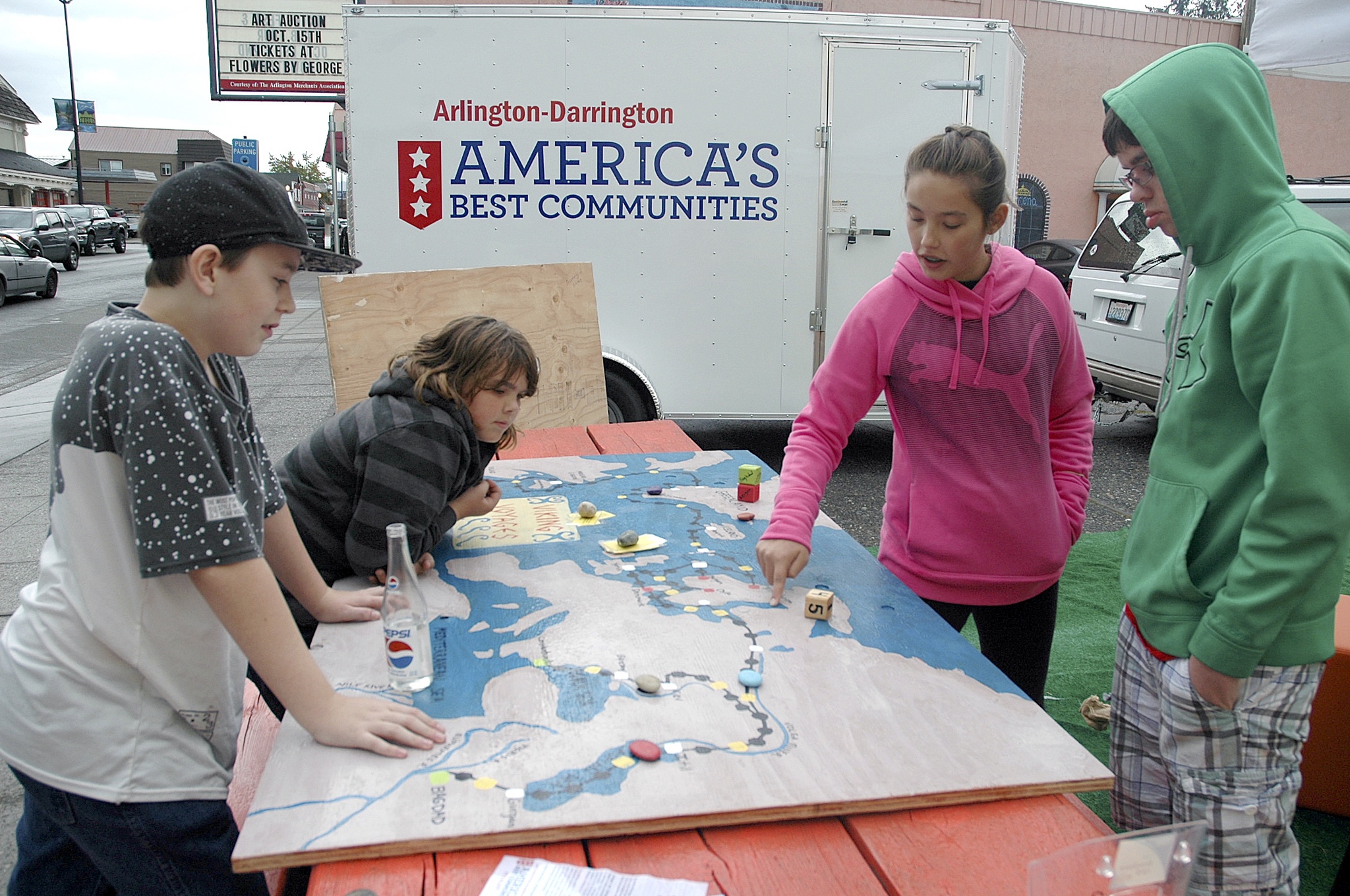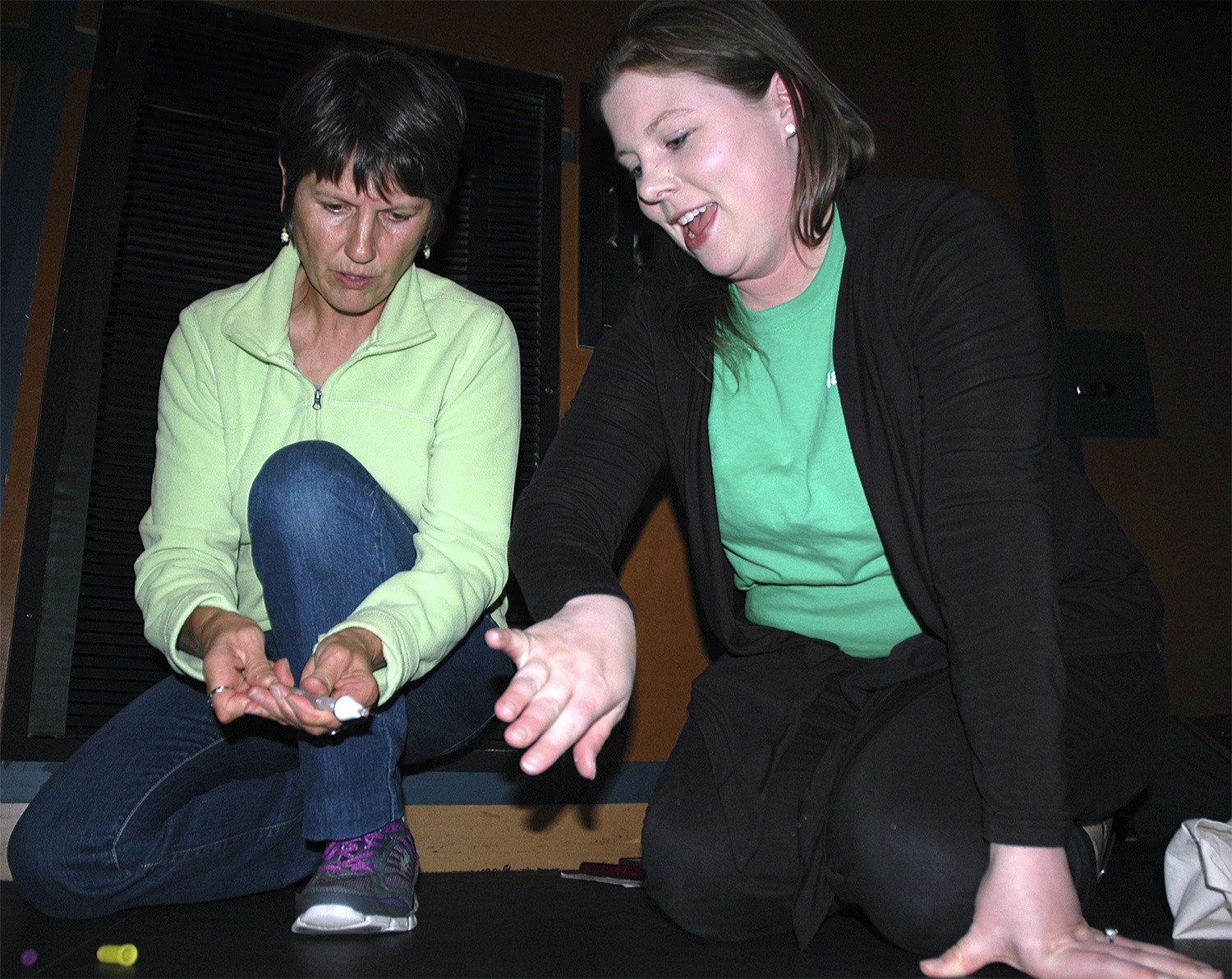ARLINGTON — You’re part of a family with two to four other people.
You have to take care of all your errands within four “work weeks” of 15 minutes each.
If you have a full-time job, you have to spend half that time working for minimum wage.
Maybe you have a car, but maybe you don’t. You need to pay for gas if you do, and for bus fare if you don’t.
You also have to buy food and household goods. If you don’t have enough money, you need to get a loan from the bank, or food stamps from the government, or cash for your possessions from the pawn shop.
You also need to register your kids for school, or enroll them in child care, while making medical appointments to keep you healthy, and court dates to keep you out of jail.
For the approximately 120 participants in the April 22 Cost of Poverty Experience Simulation at the Arlington stake of the Church of Jesus Christ of Latter-day Saints, this was simply an exercise, designed to raise awareness of the plight of working-class families.
But for far too many folks living and raising their children on lower incomes, it’s no game.
“The whole goal is to keep your family happy, healthy and safe,” Liz Jennings, community engagement manager with Community Action of Skagit County, told participants. “It’s never turned out the same way any time we’ve done it. To get through this, you’ll have to be flexible and get creative, the way real families in poverty would.”
Also participating were the city of Arlington, the Skagit Volunteer Center, United Way of Snohomish County and Leadership Snohomish County.
“Unlike the regular panel discussions of poverty, we wanted to increase people’s empathy, by having them experience a simulation of what poverty is like,” Jennings said. “After the exercise, we even discussed the differences between situational poverty, in which families encounter setbacks but have the ability to get out of it, versus generational poverty.”
By recruiting elected officials, social service providers, and members of businesses and churches, Jennings hopes they’ll focus on increasing opportunities and decreasing barriers for families in need.
“I’ve had teachers tell me they learned to be less judgmental of parents who are working two jobs,” Jennings said. “I’ve had adults who were given the role of children, who actually felt neglected because mom and dad in their ‘families’ were so caught up in their own struggles. One of the worst things about poverty is the tyranny of the moment, on just making it through the next twenty-four hours, that makes it so difficult to plan ahead.”
Arlington Mayor Barbara Tolbert headed a household with a monthly Social Security income of $674 and rent of $550.
“So much time was spent figuring out how to get all the things done that there was no time left for play,” Tolbert said. “No walks in the park, no socializing with neighbors, just daily survival.”
Tolbert was surprised to see how quickly service providers were overwhelmed by the sheer numbers of clients in need of information about where they could get help.
“There was much frustration on both sides of this exercise,” Tolbert said. “Not once did anyone have time to spend with a client to see if they could plan for the future.”
Tolbert wondered if there were ways for service providers to extend their hours in the evenings, especially in child care.
Jesica Stickles serves as both an Arlington city councilwoman and as president and CEO of the Greater Marysville Tulalip Chamber of Commerce.
Although she’s been poor before, it was as a parent in real life, while the simulation saw her in the role of the youngest child of a single dad who was unemployed.
“We were about to lose our housing due to non-payment,” Stickles said. “One of my biggest challenges was finding a way I could legally help him out, since I was required to be in school during the day and was only allowed to work in the evening.”
Before Stickles’ “dad” could even go job-hunting, he had to go to the Department of Social and Health Services, the resource center, the bank, the grocery store and the bill collectors, or else he would wind up missing work to take care of his family for that week, all before his first paycheck arrived.
“As a local policy maker, there aren’t a lot of areas we get to make change or improvement upon in social services, but I would like to start talking to state lawmakers about combining efforts,” said Stickles, who suggested that DSHS would integrate its services with banks and resource centers, to take care of errands in fewer stops. “Using the bus system can take up your whole day, and can inhibit going to work.”
Stickles attested to the amount of work that’s required not just to rise above poverty, but to tread water.
“There are so many hoops to jump through in the system that you can only sustain yourself,” Stickles said. “If you plan to get out of the cycle, you have to have an additional plan on top of social services. Continued education will need to be done at some level, for a parent to move into a career rather than a job, but it’s still very time consuming and difficult for a working mom or dad to have time for that.”
Arlington councilwoman Jan Schuette had expected food to be her family’s first priority, when it turned out to be transportation.
“Without transportation, we could not get to work, or to DSHS for food stamps, or report to the probation officer, or to the pawn shop to get money or pay the rent,” Schuette said. “Our child care costs would have taken over half our income for the month, so we opted for one adult to not work. I was shocked at how fast we went to stealing and lying to get the money.”
To that end, Schuette is calling for bus passes and gas cards for those in need, as well as affordable child care.
“We also need to finance job training that would lead to living-wage jobs for able-bodied adults,” Schuette said.
Seanna Herring-Jensen, program manager for the Arlington Community Resource Center, admitted that her simulated family was only able to pull itself out of poverty because of an advantageous head-start.
“As a service provider, we want to make sure we have considered all angles of a person’s situation, so we can help in the most-efficient way possible and lead them to self-sufficiency,” said Herring-Jensen, who conceded the need for evening hours for families working during the day, something the resource center is looking into.
Herring-Jensen added that the exercise underscored the shortage of affordable and low-income housing, which the resource center has sought to address.
Erin Monroe, president and CEO of Workforce Snohomish, found herself cast as a 17-year-old tasked with taking care of her 8-year-old brother after school.
“Instead of being able to socialize or attend some much-needed counseling sessions, I had to go on errands for my family to get the vouchers we needed to survive,” Monroe said. “We were constantly hitting walls, and my parents and grandma were constantly stressed out about what we were going to do to make it through each week.”







